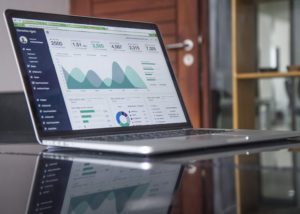
Image courtesy of Carlos Muza. Article by Sandy Nelson.
Predicting consumer behavior can be an obsession for businesses, no matter what their size. Big corporations dedicate entire departments to divining what people will want next so they can be first to offer it, and they invest massive amounts of money into predictive analytics—the mining of massive sets of data for patterns and trends in hopes of giving businesses a competitive edge by helping them predict the future.
Smaller businesses typically don’t have the means or need to invest in the sophisticated types of data crunching that their larger cousins do, but smaller-scale data analysis tools can help them track past and real-time trends and behaviors so they can make fact-based decisions about how to allocate resources.
Everyone does it
Every business can—and does—collect and analyze data to target potential customers and retain the ones they’ve already attracted.
While they gather information from much narrower fields than big businesses do, small businesses can use the statistics they collect to shape and time advertising campaigns, set prices, streamline operations, tailor customer service—in short, to improve their profitability and mitigate risk.
New Mexico hosts companies like RS21 that cater to the growing demand for predictive analytics. The Albuquerque-based startup bills itself as a data science company that uses artificial intelligence to help its clients—mostly large institutions—use “intuitive platforms” to improve their competitive advantage.
Small businesses have access to many affordable and open-source providers to help them make sense of the data they collect. Google Analytics, Watson, Sisense and Yellowfin are just a few of the companies that offer business analytics tools. Deciding which to use depends on what the business plans to do with the information it collects.
Getting started
What data are needed for what purpose. Business should determine key performance indicators and what they hope to learn from them. They might want to track the success of a marketing campaign by looking at how sales rise or fall after its launch—information they can use to tweak or continue their message. Or they might compare revenue earned through online sales versus in-store purchases to decide if a brick-and-mortar presence is necessary or a waste of capital.
Which employee is best positioned to collect and store the data. Most businesses use automated point-of-sale devices to gather data. A cashier, for example, collects names and contact information for each sale, which is how businesses know to mail coupons to customers based on what products they’ve purchased in the past.
Where to store the data. Many businesses input information in spreadsheets they maintain on company desktops, but many prefer to use cloud-based servers. The business should decide which is the most secure and accessible for its needs.
How to read the reports. Businesses should look for specific, easily digestible information that allows them to act strategically and organizationally.
Finance New Mexico article 589 by Sandy Nelson
